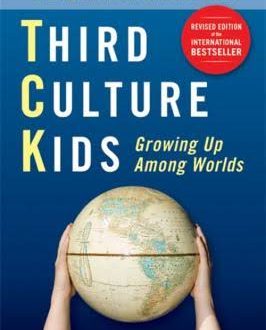Discovering God’s Divine Diversity in Your Classroom
In a recent article that I wrote for my website (www.jodycapehart.com) I brought up the topic of diversity in the classroom. My basic premise in that article was that while when talking about diversity we tend only to focus on certain categories, such as race, gender, age, and even religion. I suggested that we would benefit from expanding our conception of diversity to include learning styles, personality types, and multiple intelligences.
In a recent article that I wrote for my website (www.jodycapehart.com) I brought up the topic of diversity in the classroom. My basic premise in that article was that while when talking about diversity we tend only to focus on certain categories, such as race, gender, age, and even religion. I suggested that we would benefit from expanding our conception of diversity to include learning styles, personality types, and multiple intelligences.
This concept of diversity can be applied to Sunday school teaching as well! Let’s explore what this expanded definition of diversity has to do with teaching Sunday School and how it would benefit you – not to mention the children! – to adopt this way of thinking about the diversity of your students.
DIVERSITY’S MANY FORMS
For example, in my Sunday School classroom, I have a very diverse group of children and perhaps you do also. I have students from different countries, ethnic backgrounds, and certainly different learning styles. If I taught them all the same, there would be many that I would not be reaching with the Word of God.
Since I have been teaching Sunday School for over 40 years, I remember a time when classrooms were less diverse. In fact, curriculum reflected this uniformity mirrored in the children. Sunday School looked pretty much the same each week.
But even without outward diversity, there were still different learning styles, personalities and multiple intelligences represented in that classroom—they just weren’t addressed.
My book Teaching with Heart is designed to help teachers reach and teach to these different learning styles and personalities. In fact, I devote an entire chapter to Faith Development through the Multiple Intelligences.
SEEING CHILDREN THROUGH A DIFFERENT LENS
What would happen if your view of the children in your classroom changed? What if you looked at them and saw them as the deliciously diverse group they truly are?
How would that affect your lesson plans for Sunday? How about for the next two months?
May I lovingly challenge you today to expand your definition of diversity to include the categories of learning styles, personality traits, and multiple intelligences? Your teaching will take on a whole new dimension as you embrace the unique qualities of each and every child.
THE PARTS OF THE BODY
Not every student learns in the same way. Some are visual, others auditory. Some need to move and touch more, while others prefer to be still. Some are outgoing, while others enjoy time alone in reflection. Some thrive on dreaming up new ideas, while others find fulfillment in giving legs to those ideas.
Just as Paul wrote in 1 Corinthians 12, the body of Christ is made up of many parts. This is certainly true in our Sunday school classrooms!
In fact, I would suggest that a class of African-American four-year-old boys working in a collaborative project that unleashes their various personalities, intelligences, and learning styles is capable of more diverse learning than a multi-racial group of boys and girls ages 4-11 who are only sitting still listening to the adult do all the talking.
Does this mean adults should never talk? Of course not! Listening and interacting auditorally is an important learning style. It just isn’t the only one!
Before you start thinking… Oh dear, do I have to make lesson plans for each and every learner? I can barely find the time to show up and teach? Does this mean each week needs to be a brand new lesson plan that incorporates every possible learning style, intelligence, and personality complete with interactive games, projects, acting, as well as time for reflective writing?! And…I have to prepare this all on my own! Nope!
As you plan your lesson, ask yourself this:
- What have I done for the children to see?
- Have I provided time for the children to talk about what they are learning?
- What I have provided something for them to touch and do with their hands?
- Did I remember to give time for them to move and do?
Dear teachers, remember this: children do love stability and consistency. But there are ways to incorporate multiple teaching approaches every week without it becoming a chaotic three-ring circus.
And oh, by the way, I do believe children do need time to learn to listen, to be still, and be trained to appreciate quiet times and even listen to the silence. How else can they learn to hear the still, small voice of God?
Children do not need to be entertained 24/7. That often prevents them from reflecting on God’s Word.
That said, I strongly believe in finding creative ways to present the Word so that every child hears it in their best learning style.
Is this always possible? Not always. But the more you work on it, the more natural it will become.
It all begins with you learning to see your class as diverse. As you unpack their hidden talents, temperaments, and types, you will discover much that you didn’t know about them – and that will help you find new ways to teach and reach each one!
As we look around God’s creation, we see diversity everyone and in every one! Let us pray for wisdom to see each of our children through God’s lens of love.


